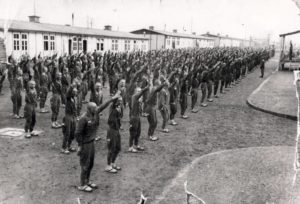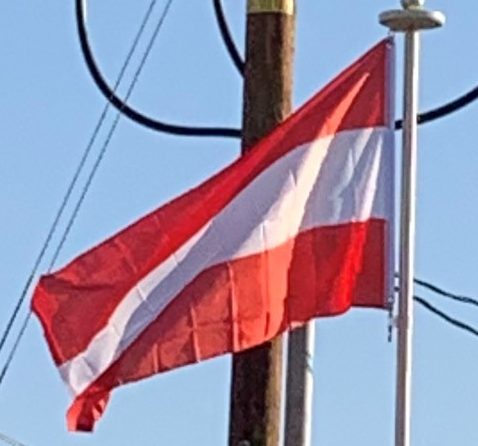Karl Renner and Adolf Schärf (Socialist Party of Austria [Social Democrats and Revolutionary Socialists]), Leopold Kunschak (Austria’s People’s Party [former Christian Social People’s Party]), and Johann Koplenig (Communist Party of Austria) declared Austria’s secession from the Third Reich by the Declaration of Independence on 27 April 1945 and set up a provisional government in Vienna under state Chancellor Renner the same day, with the approval of the victorious Red Army and backed by Joseph Stalin. At the end of April, most of western and southern Austria were still under Nazi rule. On 1 May 1945, the federal constitution of 1929, which had been terminated by dictator Dollfuss on 1 May 1934, was declared valid again.
Total military deaths from 1939 to 1945 are estimated at 260,000. Jewish Holocaust victims totaled 65,000. About 140,000 Jewish Austrians had fled the country in 1938–39. Thousands of Austrians had taken part in serious Nazi crimes (hundreds of thousands died in Mauthausen-Gusen concentration camp alone), a fact officially recognized by Chancellor Franz Vranitzky in 1992.

Contemporary Era:
Much like Germany, Austria was divided into American, British, French, and Soviet zones and governed by the Allied Commission for Austria. As forecast in the Moscow Declaration in 1943, a subtle difference was seen in the treatment of Austria by the Allies. The Austrian government, consisting of Social Democrats, Conservatives, and Communists (until 1947), and residing in Vienna, which was surrounded by the Soviet zone, was recognized by the Western Allies in October 1945 after some doubts that Renner could be Stalin’s puppet. Thus, the creation of a separate Western Austrian government and the division of the country was avoidable. Austria, in general, was treated as though it had been originally invaded by Germany and liberated by the Allies.
On 15 May 1955, after talks which lasted for years and were influenced by the Cold War, Austria regained full independence by concluding the Austrian State Treaty with the Four Occupying Powers. On 26 October 1955, after all occupation troops had left, Austria declared its “permanent neutrality” by an act of parliament. This day is now Austria’s National Day, a public holiday.
The political system of the Second Republic is based on the constitution of 1920 and 1929, which was reintroduced in 1945. The system came to be characterized by Proporz, meaning that most posts of political importance were split evenly between members of the Social Democratic Party of Austria (SPÖ) and the Austrian People’s Party (ÖVP). Interest group “chambers” with mandatory membership (e.g. for workers, business people, farmers) grew to considerable importance and were usually consulted in the legislative process, so hardly any legislation was passed that did not reflect widespread consensus.
Since 1945, governing via a single-party government has occurred twice: 1966–1970 (ÖVP) and 1970–1983 (SPÖ). During all other legislative periods, either a grand coalition of SPÖ and ÖVP or a “small coalition” (one of these two and a smaller party) ruled the country.
Kurt Waldheim, a Wehrmacht officer in the Second World War accused of war crimes, was elected President of Austria from 1986 to 1992.
